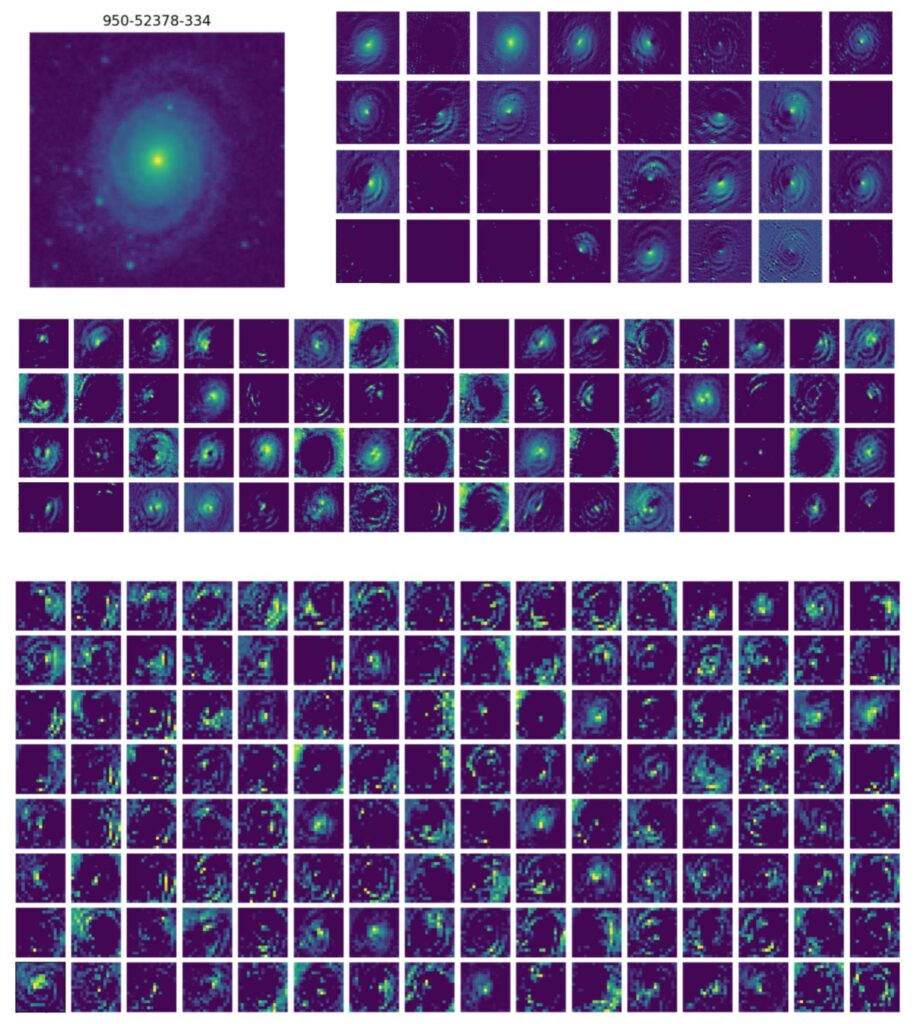10.07.2021
Astronomers have designed and trained a computer program which can classify tens of thousands of galaxies in just a few seconds, a task that usually takes months to accomplish.
In research published today, astrophysicists from Australia have used machine learning to speed up a process that is often done manually by astronomers and citizen scientists around the world.
“Galaxies come in different shapes and sizes” said lead author Mitchell Cavanagh, a PhD candidate based at The University of Western Australia node of the International Centre for Radio Astronomy Research (ICRAR).
“Classifying the shapes of galaxies is an important step in understanding their formation and evolution, and can even shed light on the nature of the Universe itself.”

Different shapes of galaxies, left to right: elliptical, lenticular, spiral, and irregular/miscellaneous. Credit: NASA/Hubble (elliptical galaxy M87), ESA/Hubble & NASA (lenticular galaxy NGC 6861 and the colliding Antennae galaxies), and David Dayag (the Andromeda spiral galaxy).
Mr Cavanagh said that with larger surveys of the sky happening all the time, astronomers are collecting too many galaxies to look at and classify on their own.
“We’re talking several million galaxies over the next few years. Sometimes citizen scientists are recruited to help classify galaxy shapes in projects like Galaxy Zoo, but this still takes time.”
This is where convolutional neural networks, or CNNs, come in. In today’s high-tech world, these kinds of computer programs are everywhere, used in everything from medical imaging, stock markets and data analytics, to how Netflix generates recommendations based on your viewing history.
In recent years, CNNs have begun to see wider adoption in astronomy. Most of the existing CNNs that astronomers use are binary – is this a spiral galaxy or not? – but this new CNN uses multiclass classification – is this an elliptical, lenticular, spiral, or irregular galaxy? – with more accuracy than the existing binary networks.
Mr Cavanagh said that machine learning is becoming more widespread in astronomy.
“The massive advantage of neural networks is speed. Survey images that would otherwise have taken months to be classified by humans can instead be classified in mere minutes.”
“Using a standard graphics card, we can classify 14,000 galaxies in less than 3 seconds.”

The power of CNNs lies in their ability to extract features in images. Within the computer program, the convolutional layers are able to outline, trace and detect the presence of spiral arms or other features. Credit: Mitchell Cavanagh/ICRAR
“These neural networks are not necessarily going to be better than people because they’re trained by people, but they’re getting close with more than 80% accuracy, and up to 97% when classifying between ellipticals and spirals.”
“If you place a group of astronomers into a room and ask them to classify a bunch of images, there will almost certainly be disagreements. This inherent uncertainty is the limiting factor in any AI model trained on labelled data.”

Being able to distinguish a lenticular galaxy from the other types can be difficult for human eyes, but the convolutional layers look for features we can’t see. Also, a CNN never tires, and if the image is flipped or rotated, that won’t cause the CNN to make a mistake. Credit: Mitchell Cavanagh/ICRAR
One great advantage of this new AI is that the researchers will be able to classify more than 100,000,000 galaxies at different distances (or redshifts) from Earth and in different environments (groups, clusters etc). This will help them understand how galaxies are being transformed over time, and why it might happen in particular environments.
The CNNs that Mr Cavanagh has developed aren’t just for astronomy. They can be repurposed for use in many other fields, as long as they have a large enough dataset to train with.
“CNNs will play an increasingly important role in the future of data processing, especially as fields like astronomy grapple with the challenges of big data,” he said.
Quelle: CURTIN UNIVERSITY
